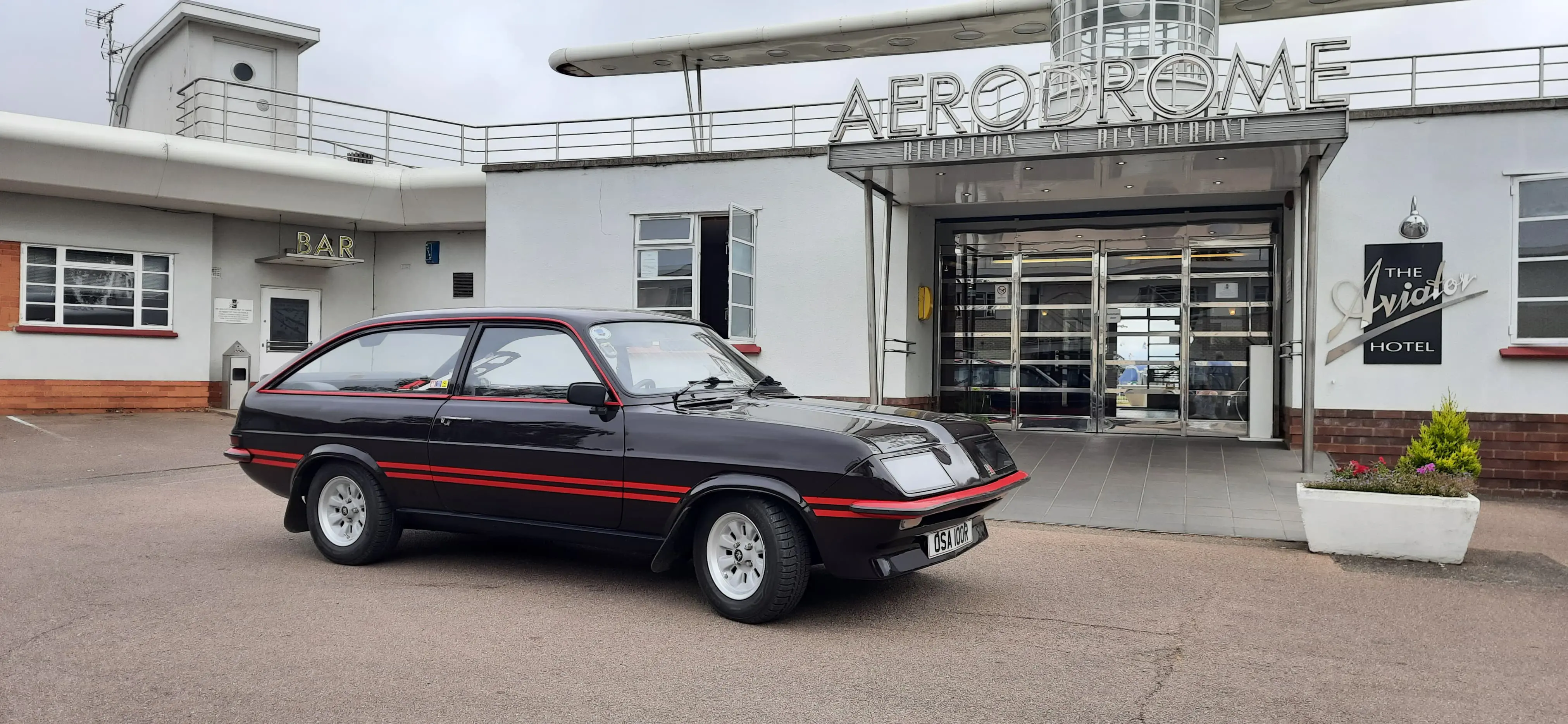MEET THE OWNER – BILLY MAXWELL AND HIS VAUXHALL MAGNUM SPORTSHATCH
05 August 2022
“Just 197 were produced, making it the lowest number production model. Its rarity is added to as Vauxhall never produced brochures or price lists. Dealers were offered them as company cars not for sale direct to the public although many found their way onto the forecourt”. And Billy Maxwell is the owner of one of the most exclusive post-war cars bearing the Griffin badge – the Magnum Sports Hatch.
Back in September 1973, Luton decided to refine its overly complicated HC family by rebranding the Viva saloon and estate with the 1.8-litre and 2.3-litre engine as the Magnum. They applied the same treatment to the coupes bar the newly launched HP “Droopsnoot”, which retained the Firenza name. The specification included quad headlamps and Ro–Style wheels, while the flagship 2300 sported no fewer than seven instruments and looked as up to the minute as a Harry Fenton suit. Autocar found the four-door saloon’s appeal was “rather more for the sporting driver”, while the fastback station wagon version was especially appealing. The great L J K Setright of Car appeared most impressed, for in his view, Magnum was “the old big–engineed Viva with all the mistakes we found rectified”. The motoring writer Clive Richardson appeared equally taken with the latest Vauxhall:
If sheer load-carrying capacity was the criterion at the price, then a Cortina Estate would be the obvious choice: the Magnum Estate is not a trades man’s vehicle, rather a more practical and roomier option on the sporty and good handling Magnum saloon.

The phrase “trade man’s vehicle” also demonstrates that 1950s-style social snobbery was far from dead by 1974. However, the debut of the Cavalier in 1975 made the Magnum’s position seem faintly superfluous, but Luton still treated the older model with a facelift. They discontinued the Coupe, but the saloons and the estates gained improved equipment levels and more power. Vauxhall launched the Sports Hatch in the following year, but as Bill explains:
It was a marketing ploy. Sales were falling as the new Cavalier saloon was being launched, and it was designed to get people asking what was that that just drove past. Initially, the concept was first shown at Earls Court in 1974 as the ‘HPF Sports Hatch’, but it never made it into production with the fuel crisis. Then by 1976, Vauxhall had parts on the shelf, and management didn’t want to introduce a new model to a range that was basically coming to the end of its run so this was the answer. It killed two birds with one stone - i.e., use up unusable parts and generate publicity through the back door. In fact, you could claim that the Vauxhall Sports Hatch is the last true, completely designed in-house Vauxhall. Everything after that shared design with Opel -the Kadett/Chevette, the Cavalier/Ascona, and so on.
The Sport Hatch was essentially the Magnum 2300 Estate, with the 2,279cc overhead-cam Big Four’ engine, bodywork finished in ‘Extra Dark Wine’ (from the VX 2300 GLS) with the HP’s nose, and Avon alloy wheels. At that time, it had few direct British rivals – the Ford Escort RS2000 was a different form of high-performance four-seater, although the Vauxhall’s looks might have tempted a Capri 2000S Mk. II owner. Meanwhile, Chrysler UK did not produce a rapid three-door RWD fastback, while the HC probably appeared too ‘nouveau’ for the average MGB GT driver. Your friendly local Vauxhall dealer could further extol the ‘Huntsman Red’ carpet and the Tartan cloth upholstery - Luton had an apparent passion for this fabric in the late 1970s.
However, Vauxhall supplied a handful of showrooms with the Sports Hatch, advising those outlets to register it themselves to attract showroom traffic. Nor did the company issue any brochures, advertisements, an official price list, or even a press release. As Billy remarks, “I have a friend whose father owned a Vauxhall dealership when they first appeared. He gave the Hatch to his son and put it in the showroom, and it brought people through the door. It also gave him the opportunity to push the Cavalier Mk. I and Chevette. Really in the late ‘70s, it was the Chevette that saved Vauxhall”. Sports Hatch production appears to have run from February to May 1976 at Ellesmere Port, with the manufacture of the standard versions ending in December 1977, although sales continued into 1978.
As for OSA 100 R, which goes by the Nom-de-Vauxhall of ‘Griff’, Billy purchased it seven years ago:
It was through word of mouth as they don’t come up very often, and sellers usually like to pass them on to people they know will look after them. According to the Club, it was no 16 in the production run according to the chassis number. Although, technically, Vauxhall only named it the Sports Hatch, the Magnum was added by the public and the likes of insurance companies afterwards to distinguish it from the Cavalier Sports Hatch when it was launched. On the road, the engine’s power output is approximately 110 bhp, and the Victor overdrive gearbox makes it very economical. Our last journey was to Sywell, a round trip of over 900 miles, and the Sports Hatch returned 38 mpg, mostly with motorway driving. The 2,300cc unit keeps up well with modern traffic and is very responsive, while the interior is very comfortable on long journeys.
Besides, who could resist the appeal of a genuine ‘hot hatchback’ with Tartan cloth upholstery?
With Thanks To: Billy Maxwell
